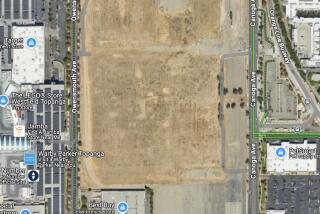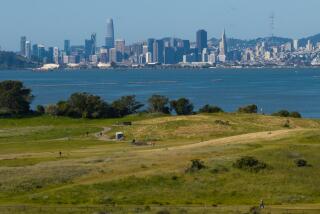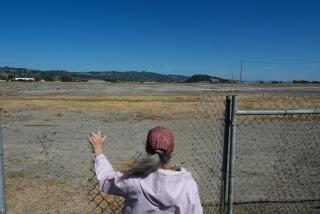Study Says Lab Doesn’t Raise Cancer Risk
Residents living near Rocketdyne’s Santa Susana Field Laboratory face no increased risk of cancer associated with radiation exposure from three decades of nuclear energy tests, according to a new state health report released Friday.
The two-year study by the California Department of Health Services was angrily rejected by residents and environmental activists who said researchers did not have enough data to draw any conclusions about the health risks for residents living near the laboratory southeast of Simi Valley.
“It is not appropriate for people to rely on the study,” said Dan Hirsch, a member of a community group overseeing cleanup of low-level radioactive contamination at the lab. “The conclusions go beyond the data,” he said.
For the past decade, residents of Los Angeles and Ventura counties near the lab have been concerned about long-range exposure to Rocketdyne’s testing of components for nuclear power plants. From 1948 to the late 1980s, the lab was a major center of nuclear research for the U. S. Department of Energy.
In recent years, neighbors have protested the lab, prompting state health officials to review cancer data in the surrounding area.
Health officials acknowledged that the cancer study was limited in its scope, because very little cancer data was available for the areas surveyed around the Rocketdyne plant. But based on the information that was collected, they said they found no reason to suspect an increase of cancer rates among people living within a five-mile radius of the lab.
“We don’t see anything unusual for people living near the laboratory developing certain cancers compared to people living elsewhere,” said Peggy Reynolds, an epidemiologist with the state Department of Health Services.
The department’s 19-page report, released Friday, was a follow-up to a preliminary analysis conducted last year of neighborhoods on the Los Angeles County side of the lab.
The earlier analysis found higher than normal rates of bladder cancer for residents who lived in three housing tracts in Canoga Park and Chatsworth than for Los Angeles County as a whole. The cancer data, which included the incidence of cancer reported in the area from 1983 to 1987, was part of an overall study of the health of residents within five miles of the lab.
Unlike the preliminary analysis, the study released Friday considered rates for various types of cancer in census tracts in Ventura County too. Official said the data showed no abnormal bladder cancer rates among the Ventura County neighbors.
Health officials theorized that if there had been a common environmental exposure that caused certain cancers, a pattern of higher cancer rates would probably be shared by men and women and lab neighbors in both counties.
In nine tracts in the Santa Susana Knolls area of Ventura County, rates computed from 1988-89 showed a higher proportion of lung cancer among men than compared to men living elsewhere in the county. But women did not show a higher rate. Researchers found no correlation with rates in Los Angeles County neighborhoods.
Reynolds said that the report did not include information about how long residents who had developed lung cancer had lived in the area or if they smoked cigarettes. Nor did it include, she said, people who once lived nearby but were diagnosed with cancer after moving away.
Still, she said, “given what we’ve looked at, there is no evidence to suggest excess cancer rates . . . in these areas.”
But Barbara Johnson, a Santa Susana Knolls resident who has breast cancer, said she has no confidence in the report because health officials examined only two years of data. “The study had too many limitations,” said Johnson, who has lived near the plant for 21 years.
Dawn Kowalski, a 13-year resident of Santa Susana Knolls, agreed.
“I want to believe it’s true,” she said. “But in the community . . . so many old-timers have died of cancer. So it sends up a red flag.”
Although state health officials have planned no additional cancer studies for the community, they said a health study of past and present lab workers is set to begin in July. They expected the study to be completed in about 18 months.
More to Read
Sign up for Essential California
The most important California stories and recommendations in your inbox every morning.
You may occasionally receive promotional content from the Los Angeles Times.










